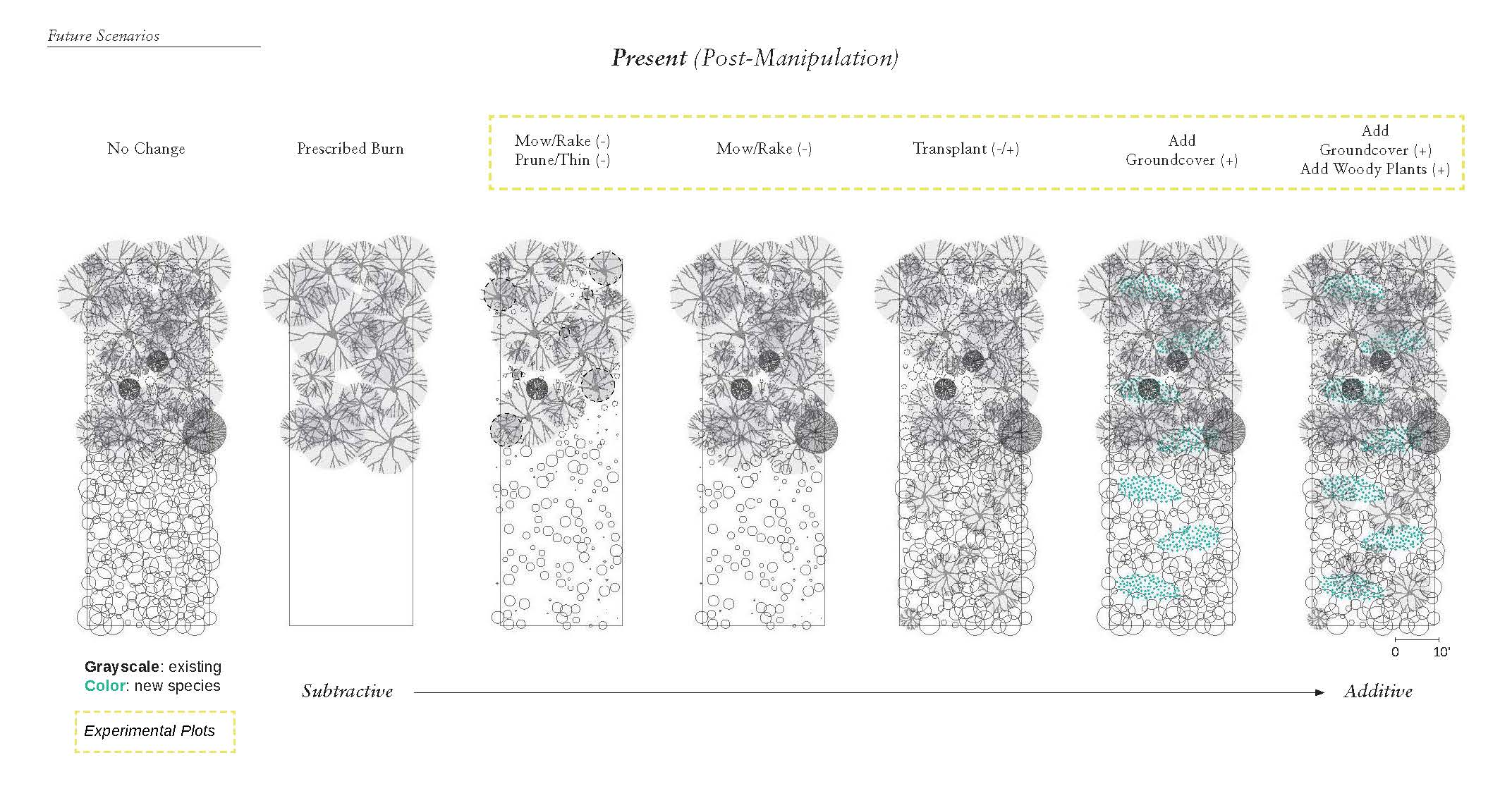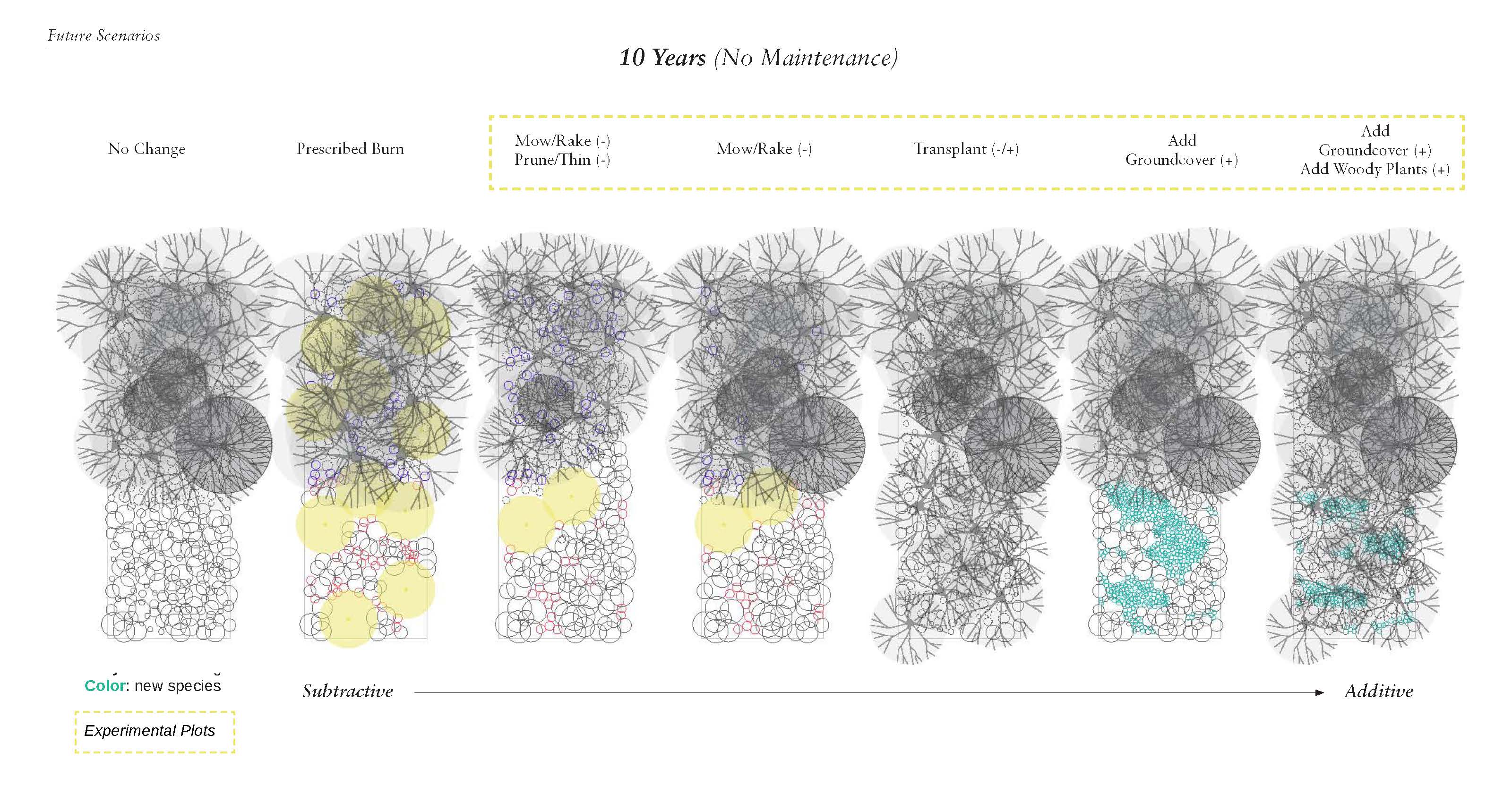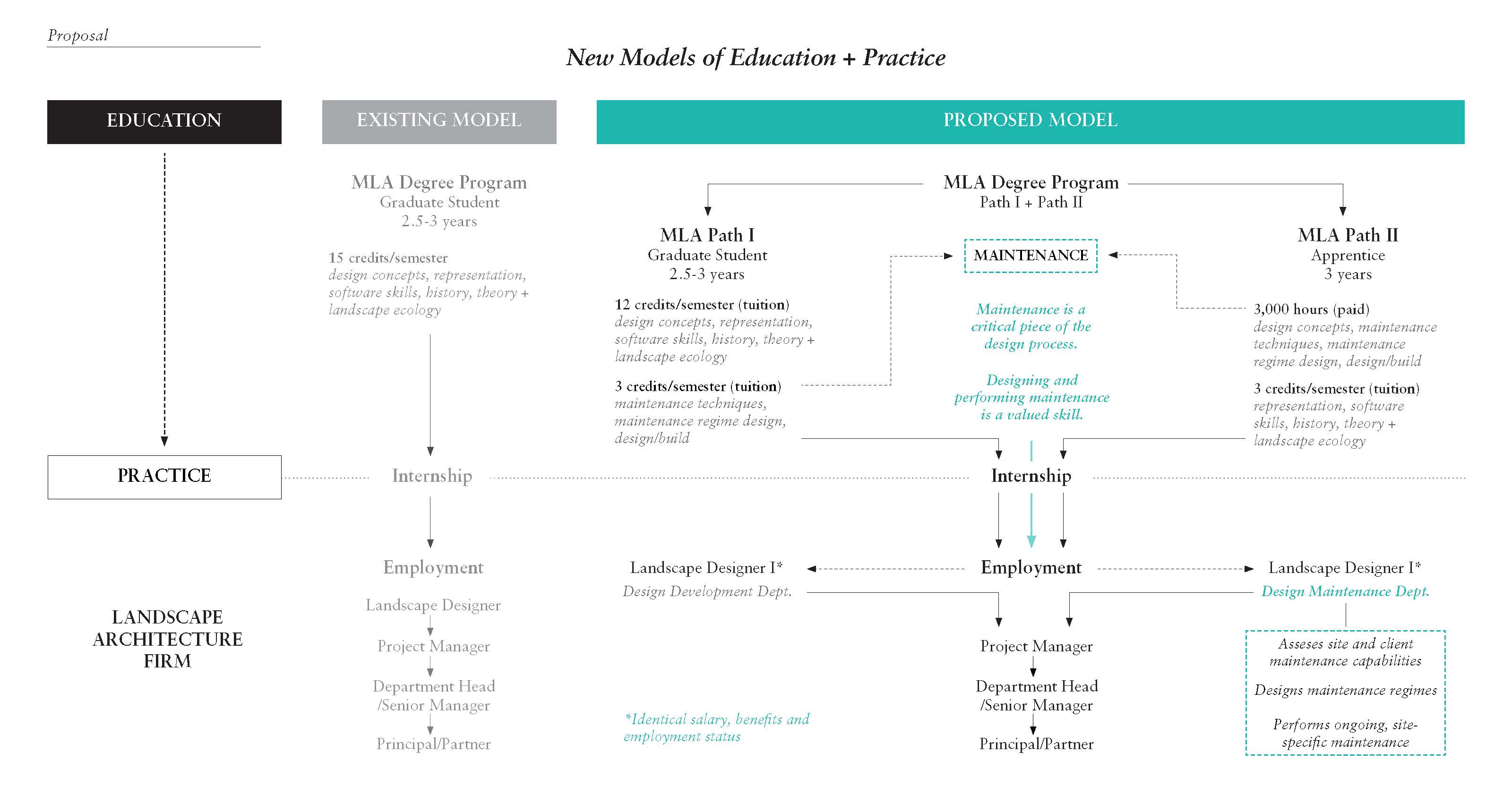Rebecca Hinch
LABOR BY DESIGN
Elevating Maintenance in Landscape Architecture
Thesis: In investigating how maintenance strategies affect plant species and spatial composition at landscape edges over time, Labor by Design: Elevating Maintenance in Landscape Architecture proposes the incorporation of performing maintenance regimes into landscape architecture educational programs, including a less cost-prohibitive apprenticeship program, so as to recognize maintenance as fundamental to the landscape design process.Positioning: Labor by Design: Elevating Maintenance in Landscape Architecture began as an investigation of how maintenance strategies at landscape edge conditions can affect plant species and spatial composition over time. Responding to Milton Airfield’s relatively homogeneous plant communities, dominated by emergent and invasive species, the project was aimed at exploring how the application of maintenance techniques could create microclimates that would result in greater diversity of plant species and spatial experiences, with the lessons learned having the potential to be applied to similar rural landscapes in central Virginia. While this is still a possible outcome of the project in the years to come, the project’s current state has served as a lesson in temporal and spatial scale, such that what is legible in drawings appears subtle on site, and more importantly, highlights the disadvantages of how most landscape architecture is currently practiced: by separating design from maintenance. By rendering changes in the physical landscape through maintenance activities, the designer must face the landscape’s responses and adjust their design accordingly. The labor involved in creating and maintaining a designer’s intentions for a site is thus a key piece of the design process, rather than simply a means to an end. The project concludes by proposing the incorporation of not only designing, but also performing, maintenance regimes into the foundational curriculum of landscape architecture education programs, including the addition of less cost-prohibitive apprenticeship programs, that could result in new models of landscape architecture practice


















